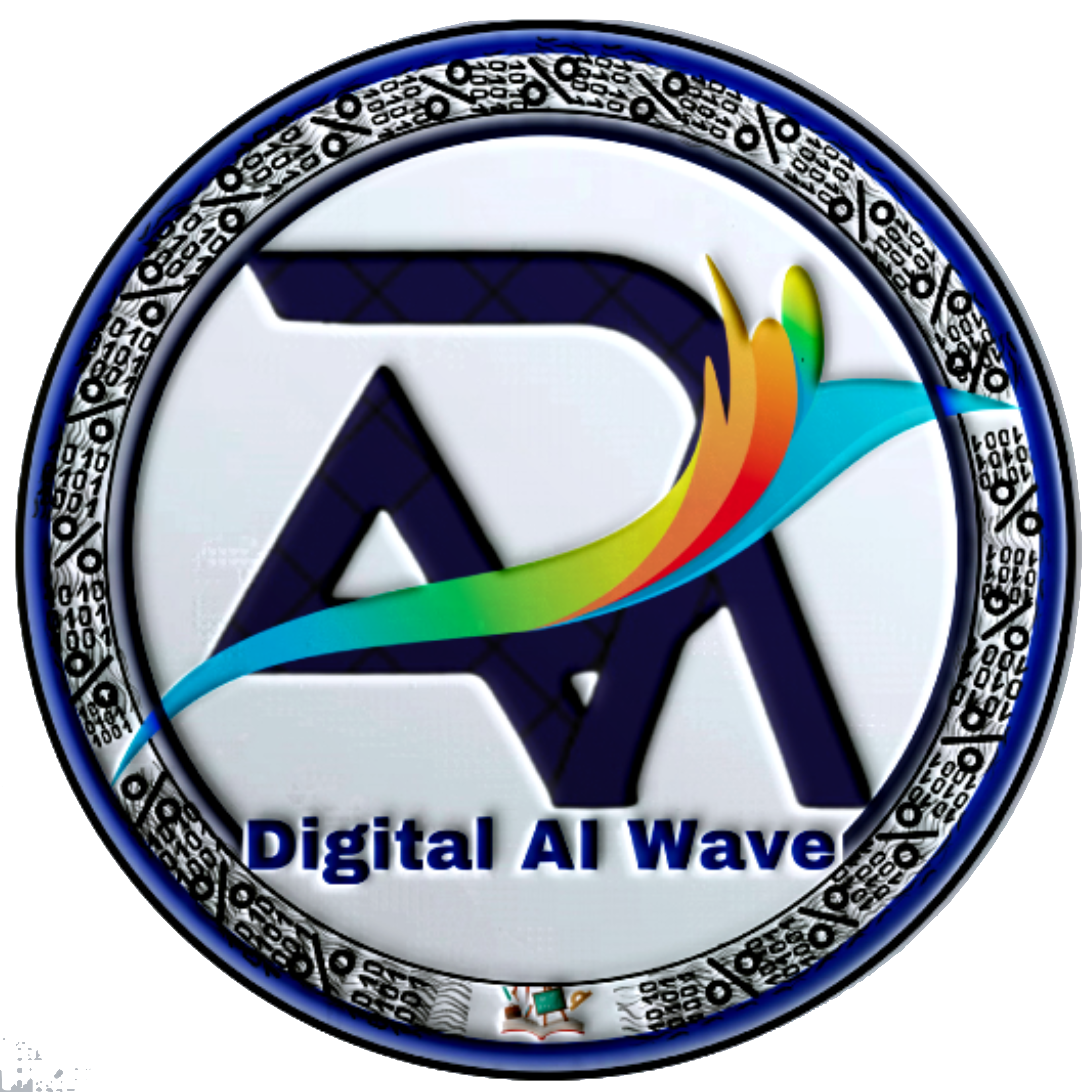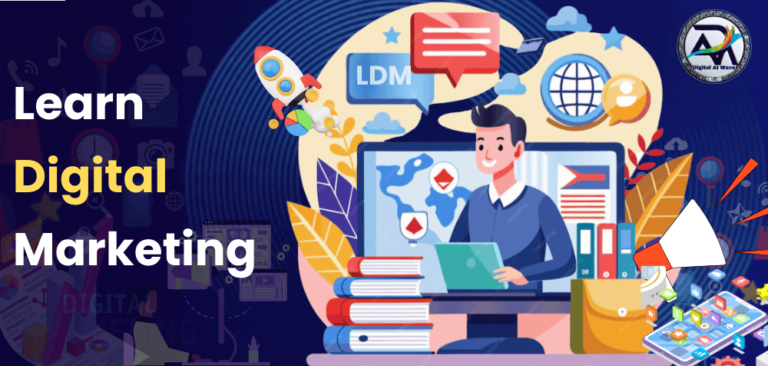Hello friends, I’ve been teaching you about Digital Marketing for a while now.
I’ve been sharing the benefits, strategies and implementation .
I’ve been telling you how Digital Marketing can help you scale your business and make it profitable.
I’ve been sharing how to implement Digital Marketing strategies in your business and how you can learn this in-demand skill to create multiple income streams for yourself.
I teach this skill through webinars, YouTube videos, blog posts and social media posts.
But wouldn’t it be great if all that knowledge I’ve shared with you on different platforms and at different times was in one place?
I know this would make you happy, save your time and help you learn, understand and implement Digital Marketing related things faster.
Through this blog I want to give you that happiness.
This is a comprehensive guide where I’ve described all the modules of Digital Marketing.
After reading this you’ll know about Digital Marketing and other related skills.
So let’s get started with this powerful guide which is absolutely free!
Table of Contents
ToggleWhat is Digital Marketing?
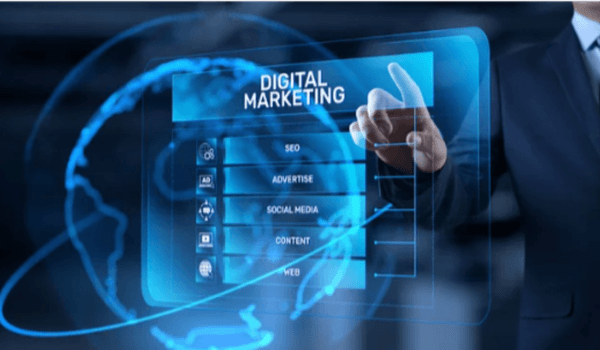
Digital Marketing is an art through which you can market your products and services online and reach any corner of the world.
This concept was discussed in the 1990s but is slowly making lives easier.
With this online marketing any business can go from $0 revenue to multi-million dollars revenue in a short time.
If we talk about some numbers in India, this industry which had a market size of 15 Billion INR in 2011 has crossed 250 Billion INR in 2021.
That’s 1730% growth. So the digital age has truly begun in India.
Digital Marketing has many benefits that’s why this industry is growing continuously.
Apart from reaching customers easily and quickly it also helps in selling customized products according to customers’ demands, needs, problems and feedback.
To sell products and services under Digital Marketing, social media, apps, websites, email marketing etc. are used.
But what are those Digital Marketing tactics that you can use to take your offline business online and sell your products? Let’s find out in the next section.
Digital Marketing Tactics / Digital Marketing Components / Digital Marketing Strategies

Every online marketing tactic that helps in creating online presence and selling products is called a Digital Marketing tactic.
While there are many such tactics used from time to time, there are also some main tactics among them all.
We’ll look at the 8 Best Digital Marketing Tactics:
Content Marketing
Social Media Marketing (SMM)
Search Engine Marketing (SEM)
Search Engine Optimization (SEO)
Pay Per Click Advertisement (PPC Ads)
Affiliate Marketing
Email Marketing
Apps Marketing
Let’s break it down: This is a paid strategy unlike Search Engine Optimization.
Under this ads are run on search engines like Google & Bing.
The purpose of these ads is to bring as many people as possible to your website.
Suitable keywords are targeted to run these ads.
Or you can say ads are run on search engines for some specific keywords.
Whenever a person asks their query in the form of those keywords on a search engine, your website shows up and that’s how you get traffic.
Content Marketing

Content Marketing means creating and publishing content on various digital platforms!
According to HubSpot, 82% of marketers are using Content Marketing.
That’s a big number.
This tactic is used to create digital presence, create brand awareness, increase traffic and generate leads.
As you start creating content, people start to know you, brand awareness increases and you start attracting your target audience to your online platforms.
Various channels are used to execute Content Marketing which are called Content Marketing Channels.
Content is created through these channels and then promoted using other Digital Marketing strategies.
Examples include Blog Posts, Audio & Video Type Content, Newsletters, E-Books, etc.
Social Media Marketing (SMM)

This is a strategy to promote brands and content on social media.
The sole purpose of Social Media Marketing is to reach your target audience.
Once the audience starts coming to social media, they are sold a quality product or service and money is earned.
Under Social Media Marketing Strategy, paid strategies are used and viral campaigns are run on social media platforms like Facebook, Instagram, LinkedIn, Twitter, Snapchat etc.
Search Engine Marketing (SEM)
This is a paid strategy unlike Search Engine Optimization.
Under this ads are run on search engines like Google & Bing.
The purpose of these ads is to bring as many people as possible to your website.
Suitable keywords are targeted to run these ads.
Or you can say ads are run on search engines for some specific keywords.
Whenever a person asks their query in the form of those keywords on search engine, your website shows up and that’s how you get traffic.
Search Engine Optimization (SEO)

SEO is a technique under which a website is ranked on search engines organically or without spending money.
Similarly, there’s also YouTube SEO, under which YouTube videos are ranked on YouTube.
In SEO, right keyword selection is the most important factor and plays an important role in ranking the website.
If we talk about its various types, SEO is divided into four parts – On-Page SEO, Off-Page SEO, Technical SEO, and Local SEO.
Under On-Page SEO, web pages are optimized according to Google algorithms.
Under Off-Page SEO, the activities you do are not directly related to your website, but still responsible for ranking, such as backlinks & directory submission!
In Technical SEO, you have to optimize your website in such a way that it can be easily indexed and search engine crawlers can crawl it.
In Local SEO, you have to optimize your website for local business so that the audience in your local area can come to your business website and transact with you.
Pay Per Click Advertising
PPC (Pay Per Click) Advertising is one type of traffic generation method where an advertiser pays the publisher each time their advertisement is clicked.
PPC Ad Campaigns are run to attract the target audience and send them to your website.
Which PPC Ad Campaign is the most popular Google Ads! Nearly 80% of companies use Google Ads for their advertising.
Besides this you have Facebook Ads, Instagram Ads, Twitter Ads, and so on, all for lead generation.
Affiliate Marketing
This is a method where you earn money without creating any products or services of your own.
Under this, you have to join a merchant or affiliate program and promote products related to your niche to people.
For promotion, you are provided with affiliate links by those merchants, which you put on your affiliate sources.
When any person clicks on those affiliate links and buys your affiliate products, you get money in the form of commission.
The Affiliate Marketing Industry is slowly becoming quite popular and is estimated to reach $12 Billion by the end of 2024.
To Know more about Affiliate Marketing, its benefit, how to start affiliate marketing journey , please read our blog Affiliate Marketing with Click Bank
Email Marketing
Email Marketing is like a communication channel that provides the facility to communicate between two people.
Through this technique, tasks like content promotion, discount offering, webinar scheduling, event planning, cold pitching, etc., are carried out.
If we talk about some figures, it was found in a survey that the Return on Investment (ROI) of Email Marketing is about 4400%.
In such a situation, it becomes necessary for any business to include this strategy in their business growth module.
Digital Marketers run Email Marketing Campaigns to sell their products or services and send traffic to relevant websites or platforms.
Apps Marketing
The technique of creating Mobile Applications to reach content, products, and services to people is called App Marketing.
Nowadays, as internet access has reached every home, increasing the number of smartphone users, it has become easier to advertise and sell products through App Marketing.
We’ve talked about so many Digital Marketing tactics, but you might be wondering why we need them at all?
What’s in Digital Marketing that can’t be done through Traditional Marketing?
To answer such questions, we need to discuss its features.
Importance / Benefits of Digital Marketing
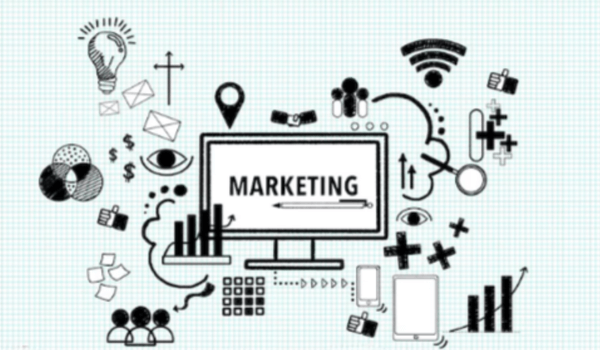
Digital Marketing is emerging as an industry that is attracting millions of people and providing them with employment opportunities.
People doing business are also implementing it in their business and increasing their sales.
So we need to discuss the benefits of it.
Let’s take a look at some Digital Marketing Benefits and understand why it’s becoming a popular industry.
Increase Online Presence
To sell any product online, first of all, you need to create your online presence.
Digital Marketing helps you in this, with the help of various tactics of which you create your presence on websites, YouTube, and social media channels.
Ability To Reach & Target the Right People
One of the biggest benefits of Digital Marketing is that with its help, you can sell your product to a person sitting in another country while living in one country.
Not only this, it provides the facility that you can choose your target audience to sell your selected products according to your niche.
In such a situation, you only have to sell your services or products to a specific group of people.
Ability To Interact & Communicate With Prospects
As i mentioned above, Digital Marketing doesn’t put any restrictions on your reach; you keep communicating & interacting with your prospects continuously.
Through Content Marketing, Email Marketing, Social Media, Videos, you keep providing value to your prospects.
This builds your audience’s trust in you, which helps a lot in your business transactions.
You Get to Know The User Navigation
With the help of Digital Marketing, you can track the activities of visitors or users visiting your online sources.
This lets you know where the user is clicking repeatedly, exactly what they’re looking for, and how you can provide them with that thing.
This way, you can navigate your users and adjust & modify your content & strategies accordingly and convert them into your customers.
Cost-Effective
If you have a low budget, you don’t need to worry at all.
Even with a low budget, you can implement Digital Marketing in your business.
In the beginning, you can manage with less expense and invest less money for ad campaigns & lead generation.
Therefore, it’s an excellent option for startups & new businesses to create brand awareness.
Can be Done From Anywhere in the World
Even if you don’t have office space, you can implement Digital Marketing from any location.
All you need is a computer and a good internet connection!
Techniques included in this like Content Marketing, Content Planning, Content Creation, Content Promotion, Email Marketing can be implemented very easily sitting in any corner of the world.
Strategy Can be Measured, Tracked, and Tweaked
Many times your planned strategies or plans don’t work and you get stuck in one place.
In such a situation, you can track & monitor your digital strategies and see what’s working for you and what’s not.
Based on this, you can tweak those strategies & plans and choose the right path to make your business profitable.
Difference Between Digital Marketing Vs Traditional Marketing
Let’s compare Digital Marketing and Traditional Marketing:
Digital Marketing:
- Uses online ads, social media, websites, apps, videos, etc., to reach customers.
- Requires proper internet connection and computer.
- Allows two-way communication where sellers & prospects can digitally interact anytime.
- Not location-constrained, can be done from anywhere, increasing business reachability.
- Higher chances of going viral, takes less time to build a brand.
- Lower cost of investment with higher return on investment.
Traditional Marketing:
- Uses offline methods like print media, newspapers, billboards, posters, TV, etc., to promote products or services.
- Aims to reach a large number of people at once.
- Only allows one-way communication with no interaction between sellers & prospects.
- Can only be done from a specific location, limiting reachability.
- Lower chances of going viral, takes more time to build a brand.
- Involves expensive strategies with not as good ROI.
Once you learn Digital Marketing (Learn Digital Marketing in Hindi), you can create a Digital Ecosystem for practicing the things taught or for your own business.
So let’s talk about what a Digital Ecosystem is, why it’s necessary, and how you can create your own Digital Ecosystem for your business.
What is A Digital Ecosystem?
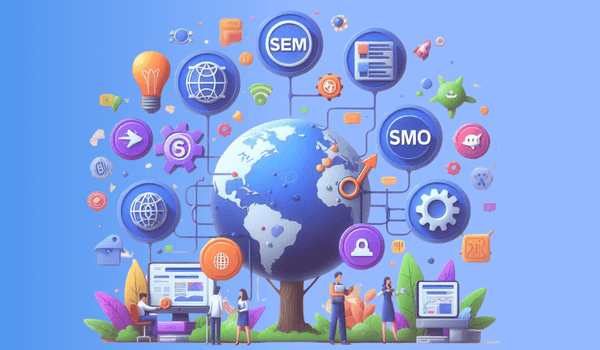
A Digital Ecosystem is a collection of all those digital processes that are responsible for taking a business online and reaching its products & services to millions of people.
It includes many online strategies which are also known as Digital Ecosystem Components.
Generally, all these strategies are divided into two parts – Organic & Inorganic!
Let’s understand these strategies in detail and see why a Digital Ecosystem is necessary for your business.
Components of Digital Ecosystem
Digital Ecosystem Components are divided into different parts under two different processes.
These two processes are – Organic Process and Inorganic Process!
Organic Process
This is also called the Free Lead Generation Process.
Under this, you don’t have to spend money to generate traffic on your website and don’t have to run ad campaigns.
In addition, you have to organically increase your reach by posting quality content on social media platforms like Facebook, Instagram, Twitter, LinkedIn, etc.
It includes three main strategies – Content Marketing (CM), Search Engine Optimization (SEO), and Social Media Optimization (SMO).
We’ve already explained Content Marketing and Search Engine Optimization Strategies in this blog under Digital Marketing Tactics.
So let’s now understand Social Media Optimization (SMO).
Social Media Optimization (SMO) is a process of optimizing your social media profiles and content to increase your visibility and engagement on social platforms.
It involves creating and sharing content that resonates with your audience, using relevant hashtags, engaging with followers, and analyzing your performance to continuously improve your social media strategy.
Inorganic Process
The Inorganic Process, also known as Paid Lead Generation Process, involves strategies where you pay to promote your content or products.
This includes:
Pay Per Click (PPC) Advertising:
As we discussed earlier, this involves paying for ads on search engines or social media platforms.
You pay each time someone clicks on your ad.
Social Media Advertising:
This includes paid promotions on social media platforms like Facebook Ads, Instagram Ads, LinkedIn Ads, etc.
Display Advertising:
These are visual ads (banners, images, videos) that appear on websites, apps, or social media.
Influencer Marketing:
This involves paying influencers or thought leaders in your industry to promote your products or services.
Why is a Digital Ecosystem Important?
Increased Visibility:
A well-structured digital ecosystem ensures your brand is visible across multiple online platforms, increasing your chances of being found by potential customers.
Better Customer Engagement:
It provides various touchpoints for customers to interact with your brand, enhancing engagement and building stronger relationships.
Data-Driven Decision Making:
With tools and analytics available in the digital space, you can gather valuable data about your customers and their behavior, helping you make informed business decisions.
Cost-Effective Marketing:
Compared to traditional marketing, digital marketing often provides a better return on investment and allows for more precise targeting.
Scalability:
A digital ecosystem can easily scale as your business grows, allowing you to reach a global audience without significant additional costs.
Competitive Advantage:
In today’s digital age, businesses without a strong online presence risk falling behind.
A robust digital ecosystem keeps you competitive in the market.
How to Create Your Own Digital Ecosystem
Website Development:
Your website is the core of your digital ecosystem.
Ensure it’s user-friendly, mobile-responsive, and optimized for search engines.
Content Creation:
Develop a content strategy that includes blog posts, videos, infographics, and other forms of content that provide value to your audience.
Social Media Presence:
Choose the social media platforms that are most relevant to your target audience and maintain an active presence on them.
Email Marketing:
Build an email list and create engaging email campaigns to nurture leads and maintain customer relationships.
SEO Strategy:
Implement on-page and off-page SEO techniques to improve your visibility on search engines.
Paid Advertising:
Use PPC advertising, social media ads, and display ads to reach a wider audience and drive traffic to your website.
Analytics and Tracking:
Implement tools like Google Analytics to track your performance across different channels and continuously optimize your strategies.
Customer Relationship Management (CRM):
Use a CRM system to manage customer interactions and improve customer service.
E-commerce Integration (if applicable):
If you’re selling products online, ensure your e-commerce platform is seamlessly integrated with your website and other digital channels.
Mobile App (if relevant):
Consider developing a mobile app if it adds value to your customers and fits your business model.
Remember, creating a digital ecosystem is not a one-time task but an ongoing process.
You need to continuously monitor, analyze, and optimize your digital presence to stay relevant and competitive in the ever-evolving digital landscape.
Conclusion
Digital Marketing has revolutionized the way businesses reach and engage with their customers.
From content marketing to social media strategies, from SEO to PPC advertising, the digital world offers a plethora of tools and techniques to grow your business.
By creating a comprehensive digital ecosystem, you can leverage these tools effectively, reaching your target audience more efficiently and cost-effectively than ever before.
Whether you’re a small startup or an established business, embracing digital marketing is no longer optional – it’s essential for survival and growth in today’s digital age.
So, are you ready to dive into the world of digital marketing?
Start building your digital ecosystem today and watch your business thrive in the online world.
Remember, the digital landscape is always evolving, so keep learning, keep adapting, and keep growing!
To learn more about Affiliate Marketing Kindly refer to our blog https://digitalaiwave.com/affiliate-marketing-a-key-to-passive-income/
You can Also Read the blog:- https://digitalaiwave.com/affiliate-marketing-with-clickbank-in-2024/
Frequently Asked Questions
- Is digital marketing a good career?
Digital marketing is a great career choice because it offers lots of benefits and opportunities.
You can often work from anywhere, which adds a lot of flexibility to your life.
It also lets you be creative and come up with new ideas, making the job exciting and fulfilling.
2. Is digital marketing a future?
Digital marketing is always changing due to new technologies, how people behave, and the need for fresh ideas.
Looking ahead to 2025, it’s clear that the way we do digital marketing is going to change a lot.
3. Which is best digital marketing?
Social media, SEO, and email are commonly used in digital marketing, but the best strategy for you might involve a different combination that suits your audience better.
4. Is digital marketing high paying?
In India, a digital marketer typically earns between 5 to 10 lakh rupees per year.
An SEO specialist usually makes about 4 to 6 lakh rupees annually.
Similarly, a content marketer’s salary ranges from 4 to 6 lakh rupees, while a social media marketer earns between 5 to 8 lakh rupees each year.
The exact salary often depends on where the job is located, the size of the company, the industry, and how much experience someone has.
5. What is the basic salary of a digital marketer?
In 2023, the typical monthly salary for digital marketers in India starts at about ₹23,875.
On top of this, they can earn extra money from commissions, cash bonuses, and profit sharing, which can range from ₹5,552 to ₹86,649 each month.
